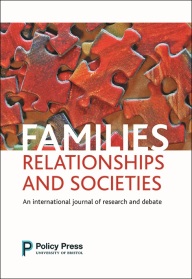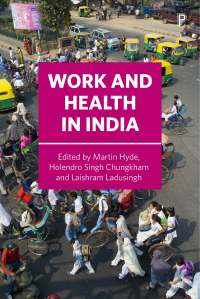
Alisoun Milne
By Alisoun Milne, Debates and Issues Editor, International Journal of Care and Caring
Issue 2, Volume 2 of the International Journal of Care and Caring is the journal’s first themed issue. It is edited by Karen Christensen and Yueh-Ching Chou and is entitled ‘Variations and Innovations in Care and Care Work: Critical Perspectives’.
The articles in this issue explore the relationships between formal care services and ‘informal’ care work and how they are being affected by change in different parts of the world. The Debates and Issues section is written by committed practitioners who want to improve the lives of service users and carers. They offer a lens on how two different countries have engaged with two contemporary challenges: ensuring cost effective user driven support for people with intellectual disabilities in Norway and how to offer creative accessible support to carers.
Two papers from Norwegian practitioners ‘User-controlled personal assistance ‐ the case of persons with intellectual disabilities’ and ‘From institutionalisation via good intentions ‐ and back again?’ explore innovations in the care and support of people with intellectual disabilities, specifically user controlled personal assistance and community based alternatives to long stay hospital care. The third paper, ‘Making a world of difference for carers: the Pathways for Carers project’ introduces us to an exciting new model of carer support – a ‘Pathways for Carers walks’ project – based in Victoria, Australia.
“discusses the tensions that exists between policy goals and offering a service that offers ‘value for money’ (sound familiar?).”
The two Norwegian authors discuss the tensions that exist between policy goals such as personalised care and the operational realities of offering a service that offers ‘value for money’ in a time of reduced funding for welfare services (sound familiar?). Balancing the rights of people with intellectual disabilities to independent living and personalised decision making with the risk of them being expected to accept a narrow reductionist service is also explored. The second paper raises the question about whether group living community-based alternatives to long stay hospital care are genuinely less institutionalised. Cuts to staffing and reduced funding for support of people with intellectual disabilities have resulted in the introduction, by stealth, of institutionalised elements to the caring regime e.g. reduced access to community facilities. The advantages and disadvantages of ‘group living’ are also discussed raising a second question – whether this model suits everyone. Accommodating more challenging needs whilst ensuring that all users are able to live an ‘ordinary life’ is a specific issue.
The ‘Pathways for Carers walks’ project brings to the fore the importance of developing services that are in tune with the local needs of carers and utilise community intelligence and resources. The ‘walkers’ that lead the service passionately believe in the power of carers’ sharing experiences and the therapeutic and physical benefit of walking in lovely open space whilst learning about the variety of support services available to them. Part way along, there is a Carers Seat dedicated to carers’ contribution to community and family life in the region; the seat is enjoyed by many carers participating in the walks.
“offers insights into the value, benefit and challenges of delivering three creative models in two different parts of the world”
The papers offer us insights into the value, benefit and challenges of delivering three creative models in two different parts of the world, brought to life through examples of users and carers experiences. The authors helpfully reflect of how policy ‘meets’ practice and the pivotal role that families and carers play in supporting and advocating for their relatives and the importance of recognising, advising and supporting carers themselves.
![International journal of care and caring [FC] - small](https://policypress.files.wordpress.com/2017/03/international-journal-of-care-and-caring-fc-small.jpg?w=500) The Debates and Issues section is free to access in all issues of the International Journal of Care and Caring
The Debates and Issues section is free to access in all issues of the International Journal of Care and Caring
Read the articles for free online:
User-controlled personal assistance ‐ the case of persons with intellectual disabilities
From institutionalisation via good intentions ‐ and back again?
Making a world of difference for carers: the Pathways for Carers project
Explore the themed issue:
Variations and Innovations in Care and Care Work: Critical Perspectives
Write for the Debates and Issues section:
The Debates and Issues section of the International Journal of Care and Caring attracts articles (up to 2500 words long) from a number of different stakeholders in the fields of care and caring on a range of contemporaneous issues of interest to an international readership. Authors are drawn from the third sector, the fields of policy and/or practice as well as students and academics. If you are interested in writing a paper for the section please contact a.j.milne@kent.ac.uk and read our guidance to authors.




![A new health and care system [FC]](https://policypress.files.wordpress.com/2018/02/a-new-health-and-care-system-fc.jpg?w=150&h=235)
















